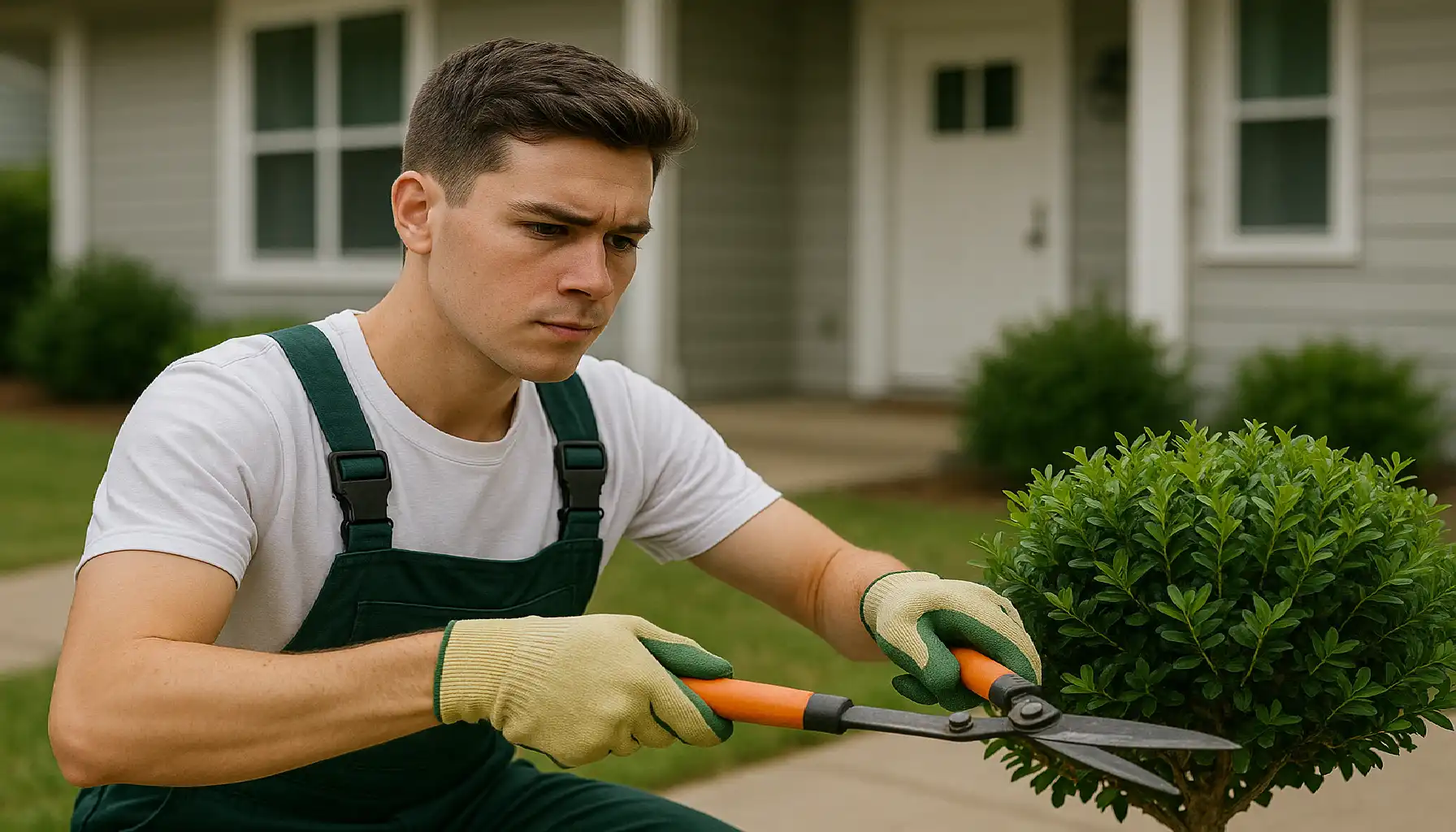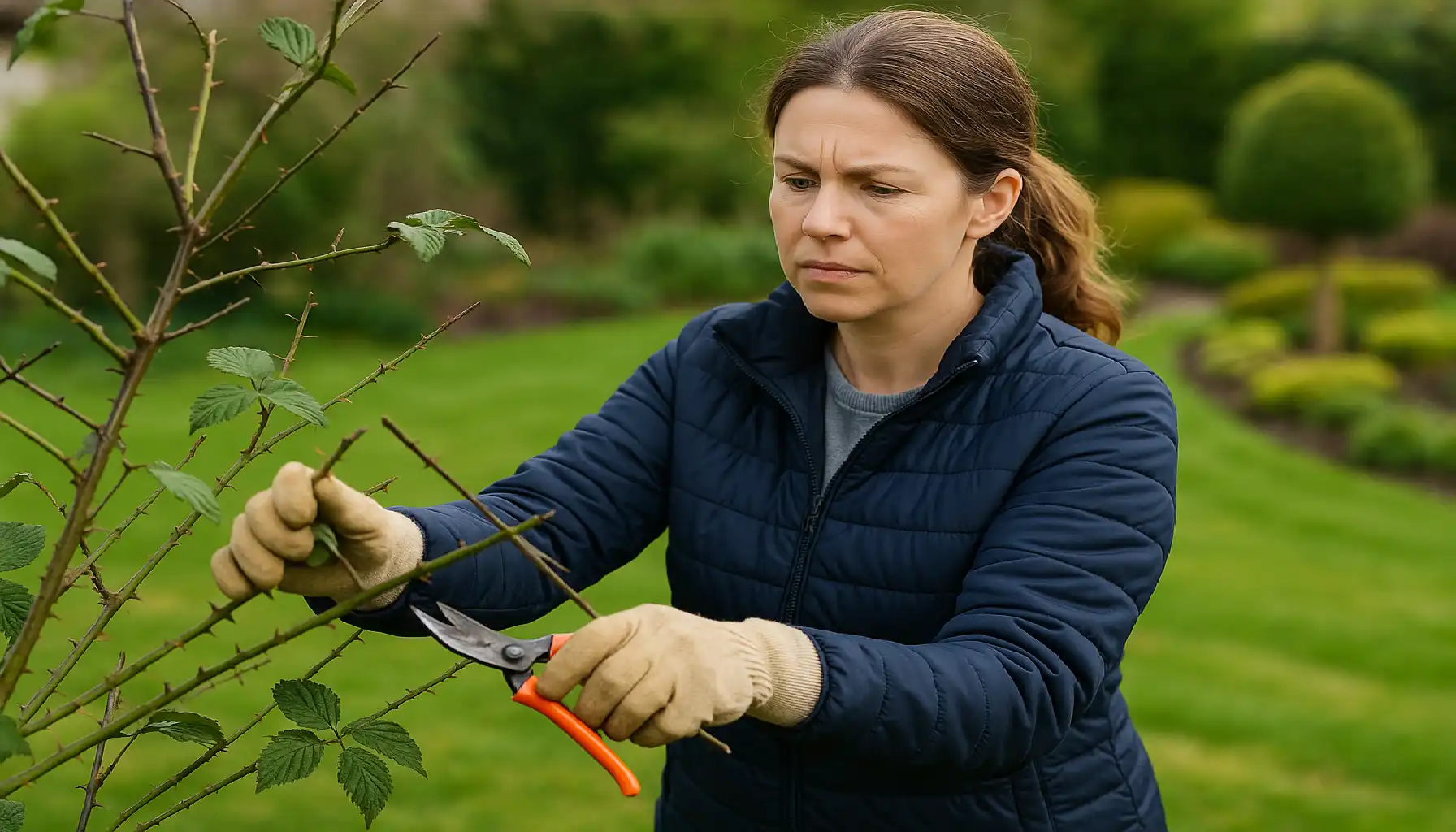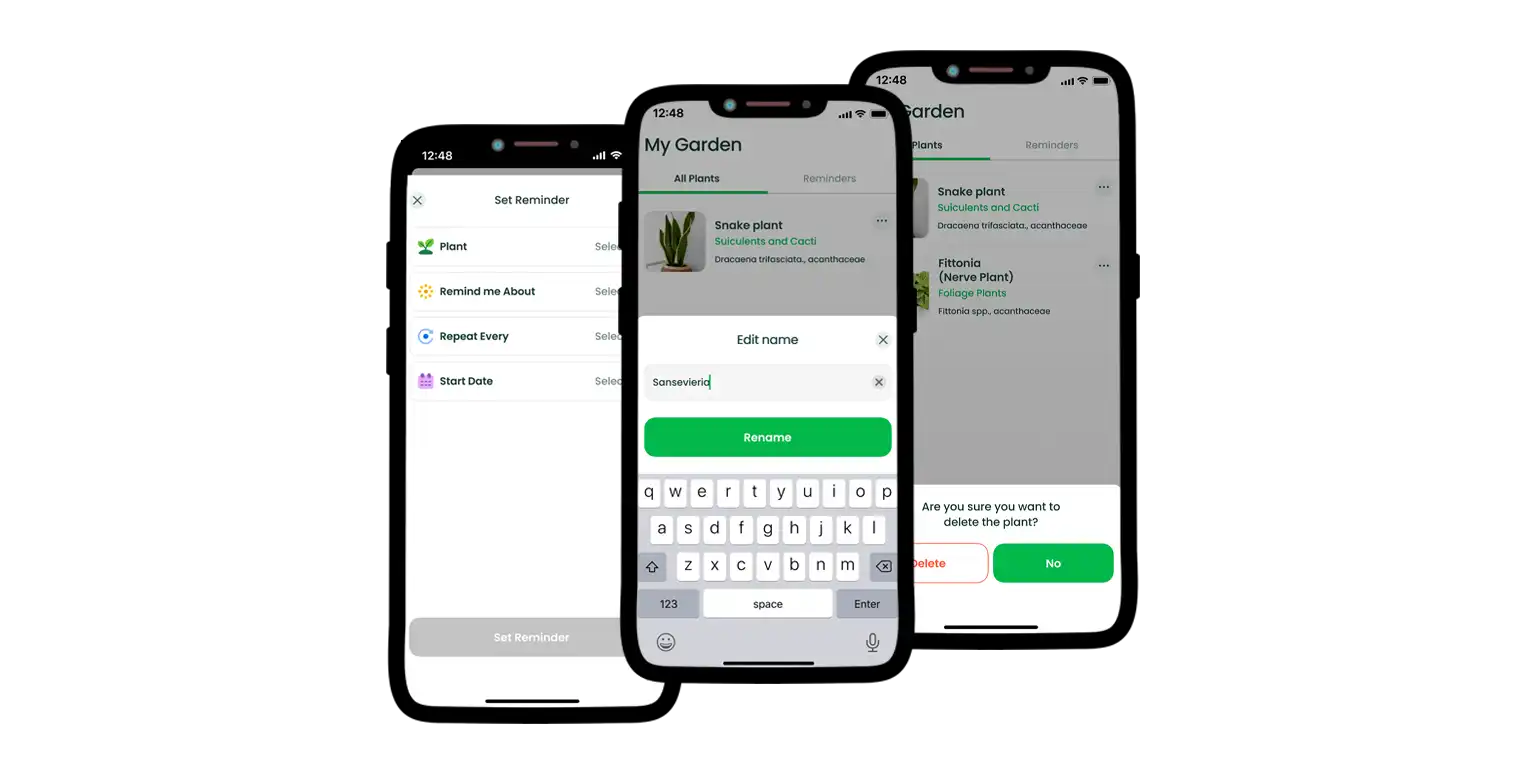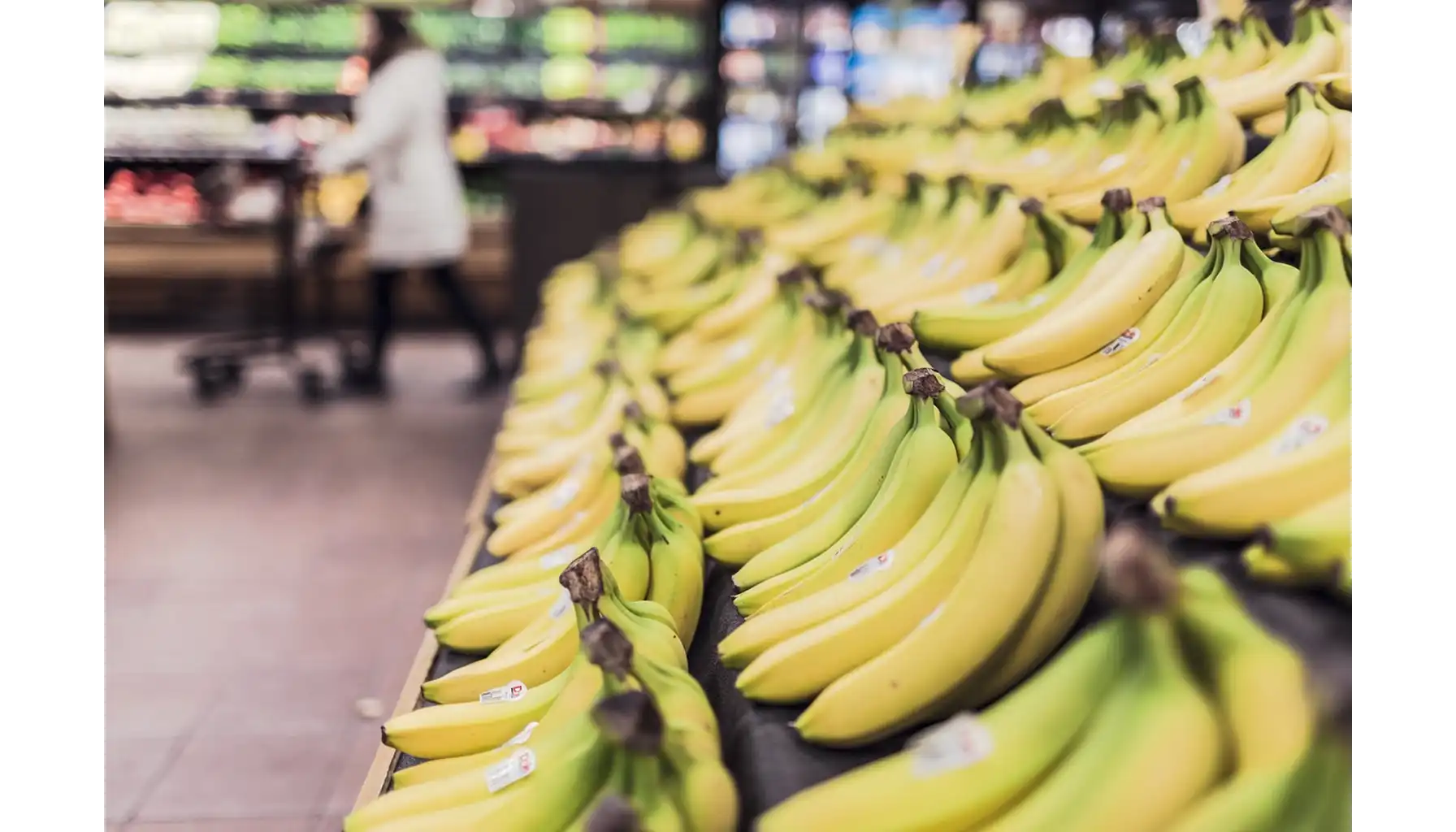Imagine your bushes in front of your house are finally blooming, but instead of lush flowers, there are twisted branches, dry shoots and chaotic growth. Why? Because proper pruning is more than a decorative element, it is a vital part of plant care routine. It affects:
Pruning shrubs helps the plant direct energy where it really matters - to growth, flowers and fruit. But when should you trim bushes? It all depends on their type.
If you used to sit with your phone in your hand to google what kind of plant is this, trying to recognize what grows on your plot - you've come to the right place! Today we are going to talk about many nuances: when is the best time to trim bushes, how to properly care for flowering, evergreen, and deciduous ones and when should you not trim bushes to keep them healthy. Let us start here.
Flowering Bushes: Beauty Depends on Timing
Flowering shrubs are the real pride of any garden. But beauty does not require sacrifice, but rather knowledge: incorrect or untimely pruning can completely deprive a bush of blooms for the whole season. Well, how to trim bushes in front of house?
Features to pay attention to before:
Some bloom on last year's shoots, others on new ones.
Pruning immediately after flowering is the key to a lush next season.
Pruning before buds swell stimulates active growth.
To make it easier for you, refer to the detailed table with the main flowering species, which shows when to trim bushes and how best to do it.
Question you want to ask | Perfect time | Tips, tricks and things to know |
When to trim rose bushes | Please note that info when do you trim rose bushes depends on the rose type: If your bush blooms on old shoots, cut immediately after flowering. If on new shoots - the best time to trim rose bushes at the end of winter or early spring, before the growth starts.
| Sharpen your garden shears! Remove all dry, damaged branches before pruning roses and don't forget your gloves. Don't know how to trim rose bushes? Just cut above the outer bud at a 45° angle so that the shoots grow outwards. |
When to trim butterfly bushes | Late winter or very early spring - before active growth starts while the shrub is dormant | How to trim butterfly bushes? Well, species bloom on new shoots, so do not be afraid of radical pruning. Cut the bush to 20-30 cm from the ground. Do not worry - it will quickly recover. |
When do you trim Lilac bushes | Immediately after flowering - late spring or early summer while the plants are still young | Lilacs set buds in the fall, so pruning in early spring is a taboo! Remove only flowering inflorescences and weak shoots. |
When to trim forsythia bushes | Early spring - immediately after flowering, before active growth of new shoots begins | Forsythia is one of the first messengers of spring. Remove old and crossing branches to encourage new shoots. |
When to trim azalea bushes | Late spring or early summer - after flowering, but before budding | Never prune azaleas in the fall or winter - this will kill future flowers. Formative cutting is best done before the end of June. |
When to trim gardenia bushes | Late spring or immediately after flowering - while the weather is still warm and the shrub is actively growing | Do not cut gardenias late - they will begin to form buds in the fall. Remove thin branches and slightly shorten the rest. |
When to trim hydrangea bushes | Time depends on the species: | For example, cut back the panicle hydrangea in the spring and the large-leaved hydrangea immediately after flowering. Know your type before you pick up pruning shears. |
These recommendations will help you to correctly cut flowering shrubs without the risk of damaging their development. Everyone can become a good gardener - the main thing is to consider the peculiarities of each plant, take your time and follow the natural cycles.
Evergreen Bushes: Timing is Everything
Evergreen shrubs decorate the garden all year round, but that doesn't mean you can cut them whenever you want. Improper cutting can lead to loss of shape, weakening of the plant and even its death. So, when to trim evergreen bushes is not an idle question. You should be especially careful with holly, barberry and so-called “burning” bushes.
Before pruning, consider:
Evergreen shrubs grow slower than flowering shrubs;
Harsh pruning can spoil the appearance for months to come;
As a rule, the best time to trim evergreen bushes is in late winter or early spring, when there is no active growth.
Take care for evergreen species:
Question you want to ask | Perfect time | Tips, tricks and things to know |
When and how to trim overgrown bushes in common | Late winter or early spring - before vegetation begins | Gentle shaping pruning helps to keep the plant healthy. Do not remove more than 1/3 of the volume at a time to avoid weakening the plant. Cut on a cloudy day or in the evening. |
When to trim holly bushes | Late winter - before new leaves emerge and growth begins | Important rules of how to trim holly bushes to remember: cut off damaged or overly elongated shoots. Use a sharp and clean pair of garden scissors. |
When to trim barberry bushes | Spring before active growth begins or just after blooming | Barberry easily tolerates cutting, especially in spring. Do not prune on hot days - the bush may suffer. Remove crossing and thickening branches to improve shape and air exchange. |
When to trim burning bushes | Early spring - before buds begin to awaken | This ornamental plant can be cut short for rejuvenation, forming a dense, rounded crown. How to trim bushes round? Not a difficult technique: cuts are made evenly around the circumference, focusing on the center of the bush. The main thing is to avoid fall pruning so as not to disrupt the growth cycle. |
How to trim overgrown bushes | Early spring or fall - during dormant periods and before the heat of the season | Start by removing dry, diseased and old branches. Do severe pruning in stages: cut some shoots this season and the rest next season to reduce stress and help it recover. |
Proper evergreen cutting helps keep your shrubs in shape, healthy and decorative. Now you're familiar with the rules, next time the maintenance process will be a pleasure, not a disaster.
Deciduous Bushes: Trimming for Health and Harvest
Deciduous shrubs are not only the green backdrop of a garden, but also a source of delicious berries and fruit. To ensure that they bear fruit vigorously, it is important to know how to treat each species individually.
Berry plants require regular pruning:
Recommendations to cutting the berry bushes:
Question you want to ask | Perfect time | Tips, tricks and things to know |
When to trim raspberry bushes | Late fall or early spring - after the end of fruiting and before the start of sap movement | Remove two-year old fruiting shoots from the root. How to trim raspberry bushes? Not a big deal - cut down to soil level. And leave the annual shoots for next year's crop. |
When to trim blueberry bushes | Late winter or early spring - while the plant is dormant (but not later than the start of budding) | Remove weak, crossing or aging branches to ensure good air circulation. Keep 6-8 strong shoots per bush. |
How to trim blackberry bushes | Fall or winter - immediately after harvest, before the bush has started to prepare for winter. | Cut back old shoots and shorten new shoots to 1.2-1.5 m. Work with gloves - the stems are prickly. |
Pruning deciduous bushes is a contribution to the future harvest and beauty of the garden. Knowing the best time of year to trim bushes with berries will not only keep the plants healthy, but also significantly improve their decorative qualities.
Common Mistakes to Avoid When Cutting
Caring for a plant is not just about shears and the desire to “make it look pretty”. It is not uncommon for even experienced gardeners to make mistakes that can lead to weakened plants, reduced yields or impaired natural growth. Below you can find some of the main blunders to avoid:
Cutting in frost or hot weather. This is stressful for the plant. At minus temperatures, branches become brittle, and heat can cause burns to the twigs. It is better to wait for moderate weather. Remember when is the best time to trim trees and bushes - in the transition season: early spring or late fall (refer to the tables above for details).
Ignoring the natural form. By cutting a shrub “in line” without taking into account its natural architecture, it is easy to spoil its appearance and upset the balance between growth and flowering.
Damage to new buds. In spring, it is easy to mistake dormant buds for dry branches. Try to cut 0,5-1 cm above the outer bud at an angle of 45°. So you will not slow down growth and give the bush the opportunity to develop in the right direction.
Lack of regularity. Pruning should not be a one-off procedure “once every few years”. Plants need a rhythm - especially those that bear fruit. It is better to do it on time and a little than rarely and drastically. For example, when to trim back rose bushes is not just a matter of season, but of regular care throughout the year.

Plant Finder: Your Smart Garden Assistant
Unfortunately, not everyone was born with scissors in their hands and has a green thumb to intuitively take care of plants correctly. But there is good news: to avoid getting confused by all these nuances and to find the right attitude to each plant, you only need to do one thing - download a smart assistant - the Plant Finder app.
It's more than just a plant identifier. Plant Finder enables you to:
Recognize plants by photo;
Get detailed information about care (watering, lighting, soil tips and control, etc.);
Set watering reminders;
Track plant diseases and information about them;
Save notes, photos, keep personalized notes about plants.
Read articles, tips, reviews and insights on the app's blog.
Imagine: you take a photo of a rose and the app tells you what variety it is, when to trim back rose bushes, and how to care for it properly. Especially useful if you have a diverse garden or are caring for bushes that require individualized care. No more searching for information, now you always know what to do and how to care for your green favorites.
Less Is Better
Sometimes, in order for something to bloom - you don't have to add to it, you have to remove it. In the garden, as in life, timely “pruning” helps you get rid of the excess to unlock its true potential. A well-tended shrub doesn't necessarily look perfect. But it grows confidently, doesn't waste energy and quietly survives season after season. And if you are not sure where to start, start small: one bush, one step, one precise movement.
AI Plant Finder Related Posts:









